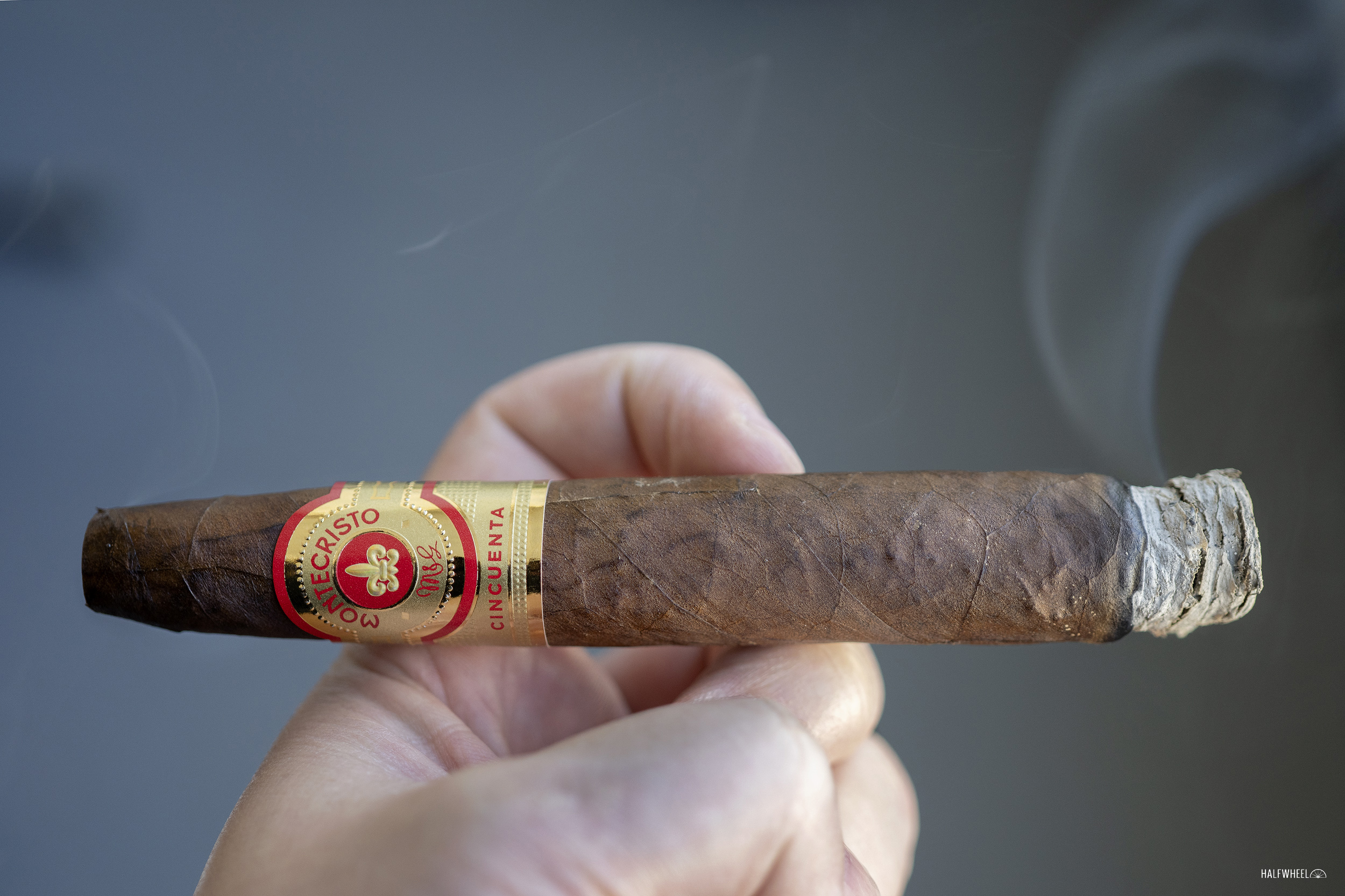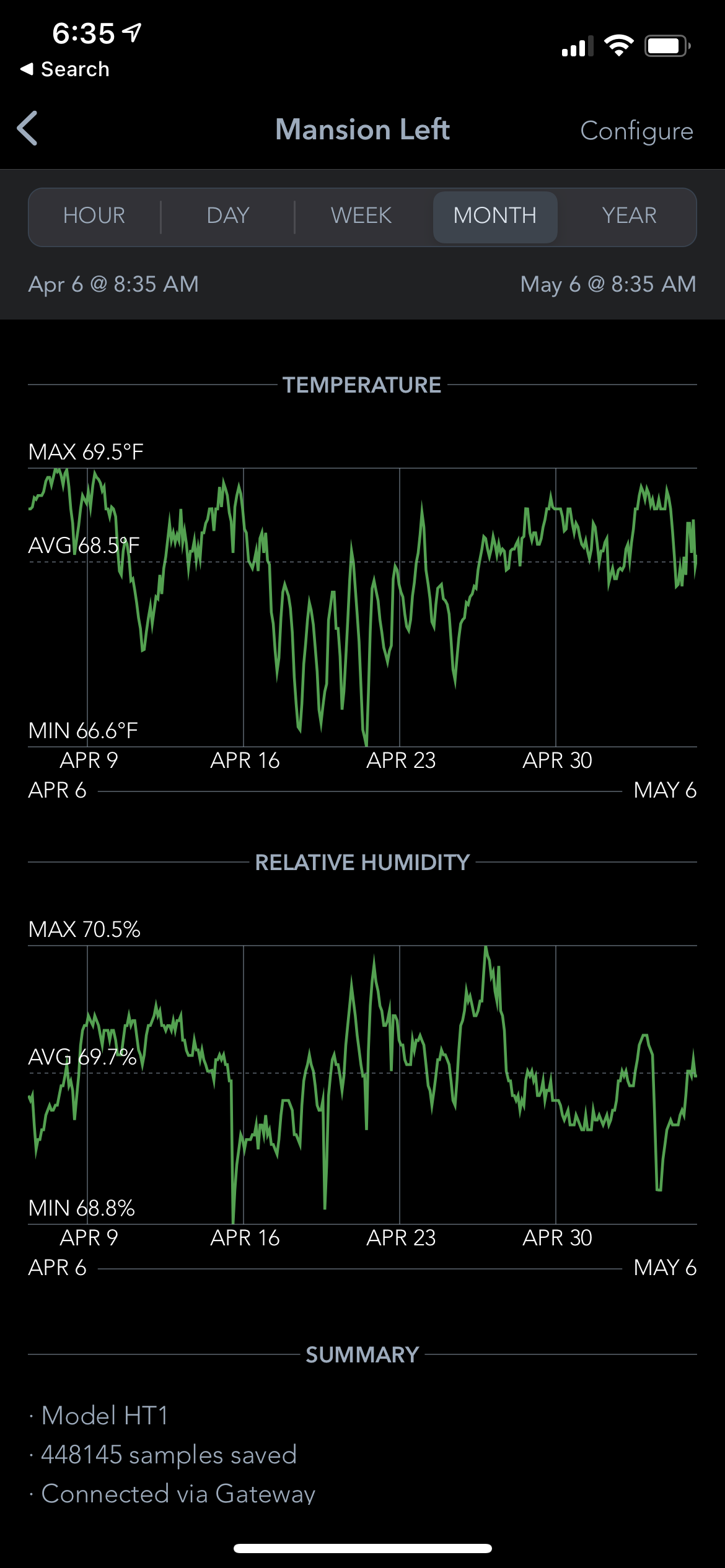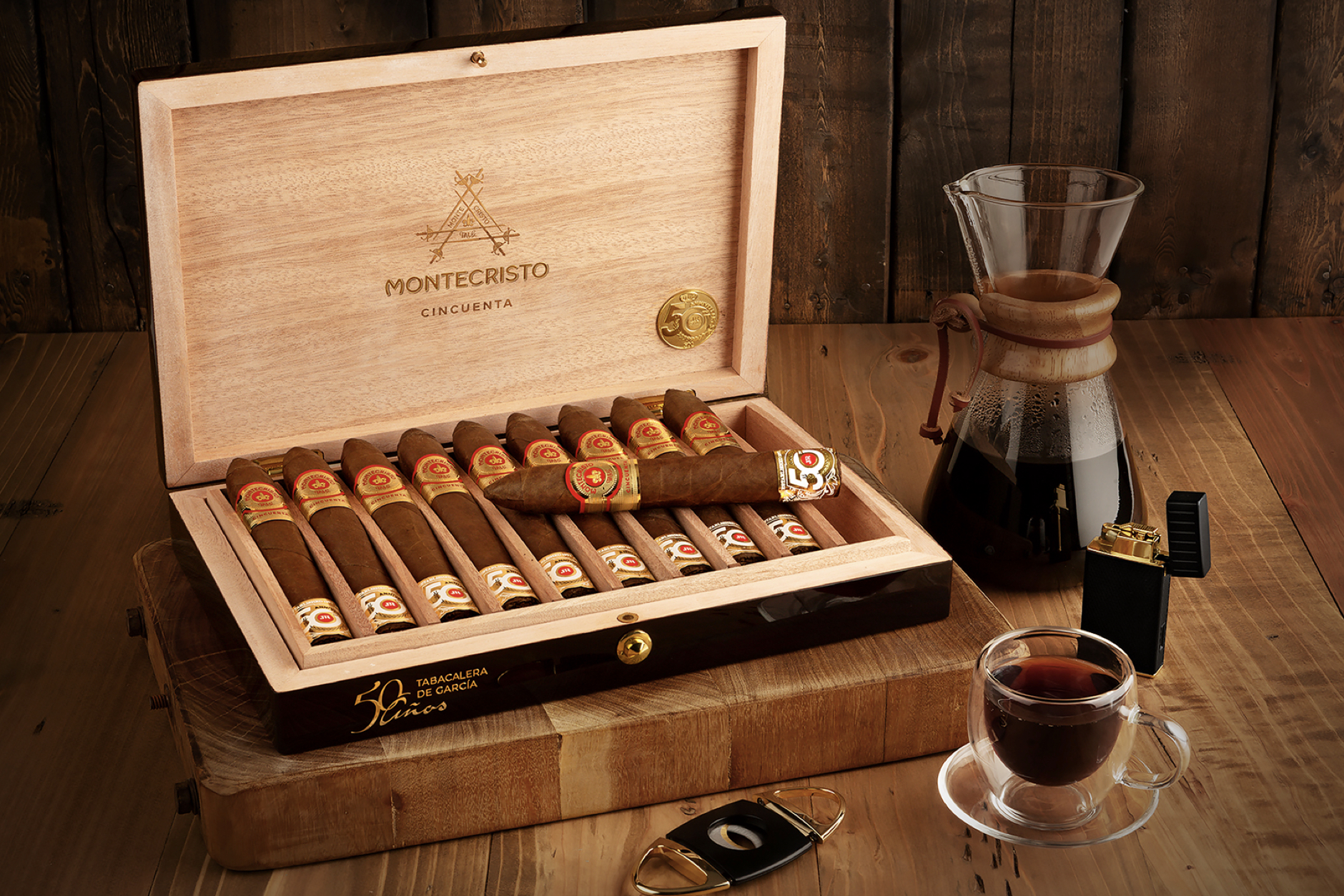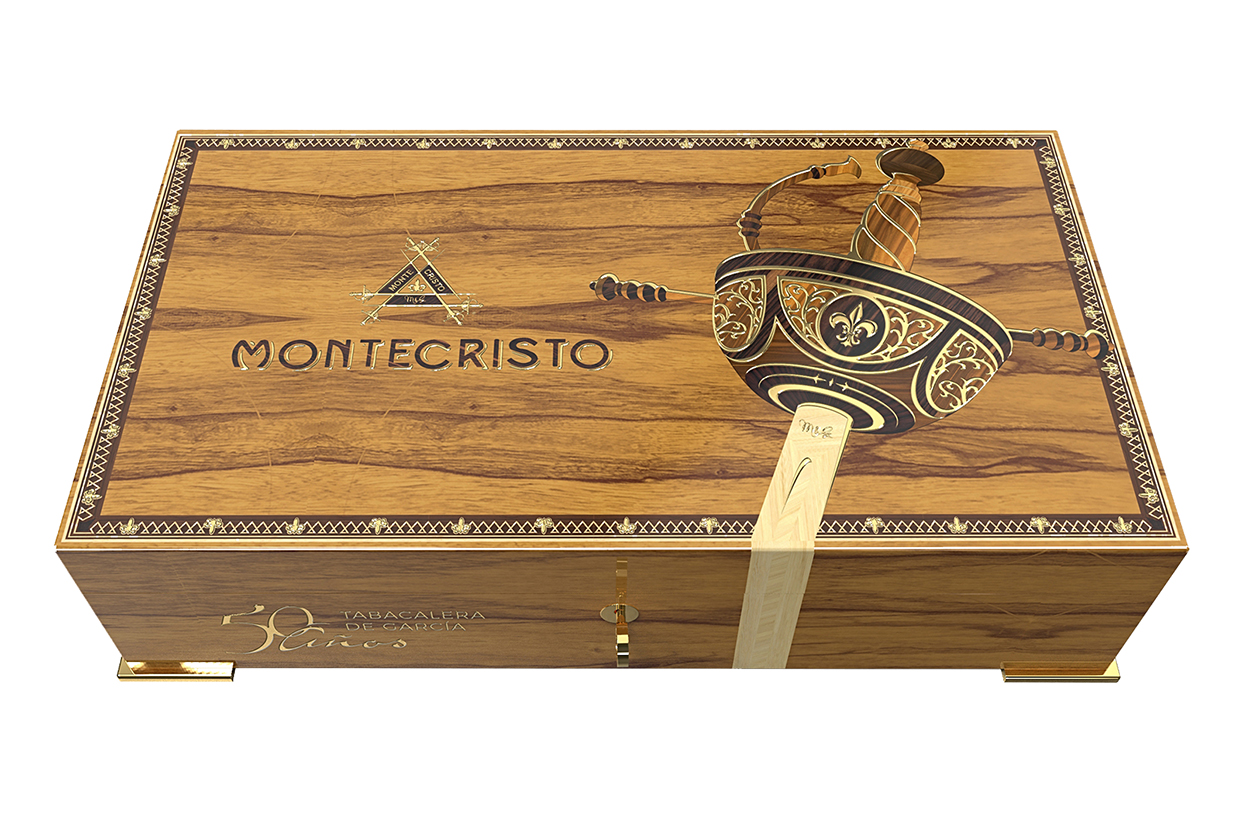There are very few people who have contributed as much to the cigar industry as Lew Rothman; depending on who you ask, no one has contributed as much. While I haven’t exhaustively thought this through, I might agree with that statement.
In 1971, Rothman started a small cigar store in Manhattan which he described as “the world’s largest cigar store,” by the time he sold a controlling stake in that business in 2003, JR Cigar had reached that milestone.
My first interaction with JR Cigar—like so many who lived in the Carolinas—was driving by the company’s billboards and superstore in Burlington, N.C. The nearly 200,000-square-foot building is much different these days than it was at that time. It still houses the company’s warehouse operations, but when I first saw it while driving down I-40, the building included a massive tobacco store that also sold all sorts of knickknacks like books, clothes, flags and even toys.
As you likely know, JR Cigar is one of the largest retailers of cigars thanks to its internet store and catalog sales, but Rothman grew the business from that single store in Manhattan to multiple locations in New York City. He would eventually leave New York, moving the company’s stores to New Jersey, as well as opening up additional locations in Dallas, Detroit, North Carolina, Philadelphia, Washington D.C. and even Tel Aviv, Israel.
Rothman’s contributions were hardly limited to the number of storefronts he opened. He also started Santa Clara, Inc., a cigar distributor that would import its own brands like JR Alternative and Excalibur, and eventually began selling those cigars and others to other stores. In 1980, he published his “Cigar Almanac,” a book that answered all sorts of questions about cigars ranging from how to buy a cigar, how to store cigars and even some of his well-known wit like: Question: My wife says my cigars stink. Answer: She’s right.
Beyond the book—a copy of which an old neighbor gifted me while I was getting into cigars that still remains next to my desk—he used the pages of the JR Cigar catalog to interact with millions of customers over decades. For many, Rothman’s editorials in those catalogs are the stuff of legends, still referenced by many in the business today.
He built brands, bought and sold factories, gave countless cigar companies advice, and constantly challenged the norms for how cigars were bought and sold in America. While Rothman is no longer publicly involved in any cigar business to my knowledge, he’s still around. He posts pictures of his cigar museum on Facebook, he’ll comment on the Cigar Family forum, and every once in a while, I’ll get an email from him. Given the breadth and depth of his involvement in the cigar business over the last 50 years, I am firmly convinced that Rothman will always be involved in the cigar business in one way or another.
Six paragraphs won’t crack the surface of what Rothman did. Even this more extensive history produced by JR Cigar doesn’t begin to tell the story. Some of those contributions will inevitably never be told, but rest assured, without Lew Rothman the cigar industry would be a very different one than the one you see today.
For those that did the math, it’s been 50 years since Rothman opened up that store. As such, JR Cigar is celebrating with a variety of limited edition cigars.
It should be no surprise that one of those cigars will come from JR’s sister company, Altadis U.S.A. For this release, the latter company opted to create a new version of one of its most special cigars.
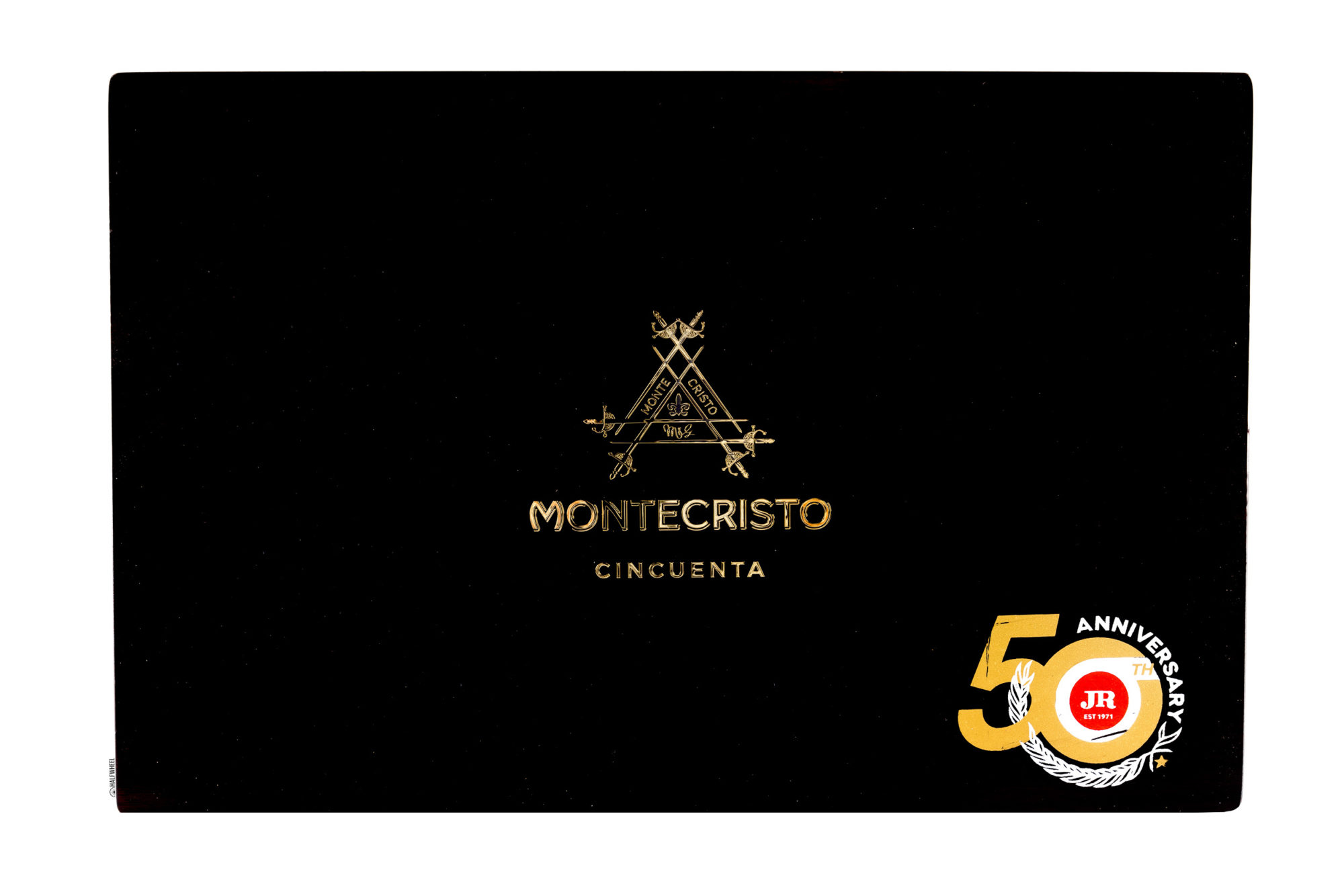
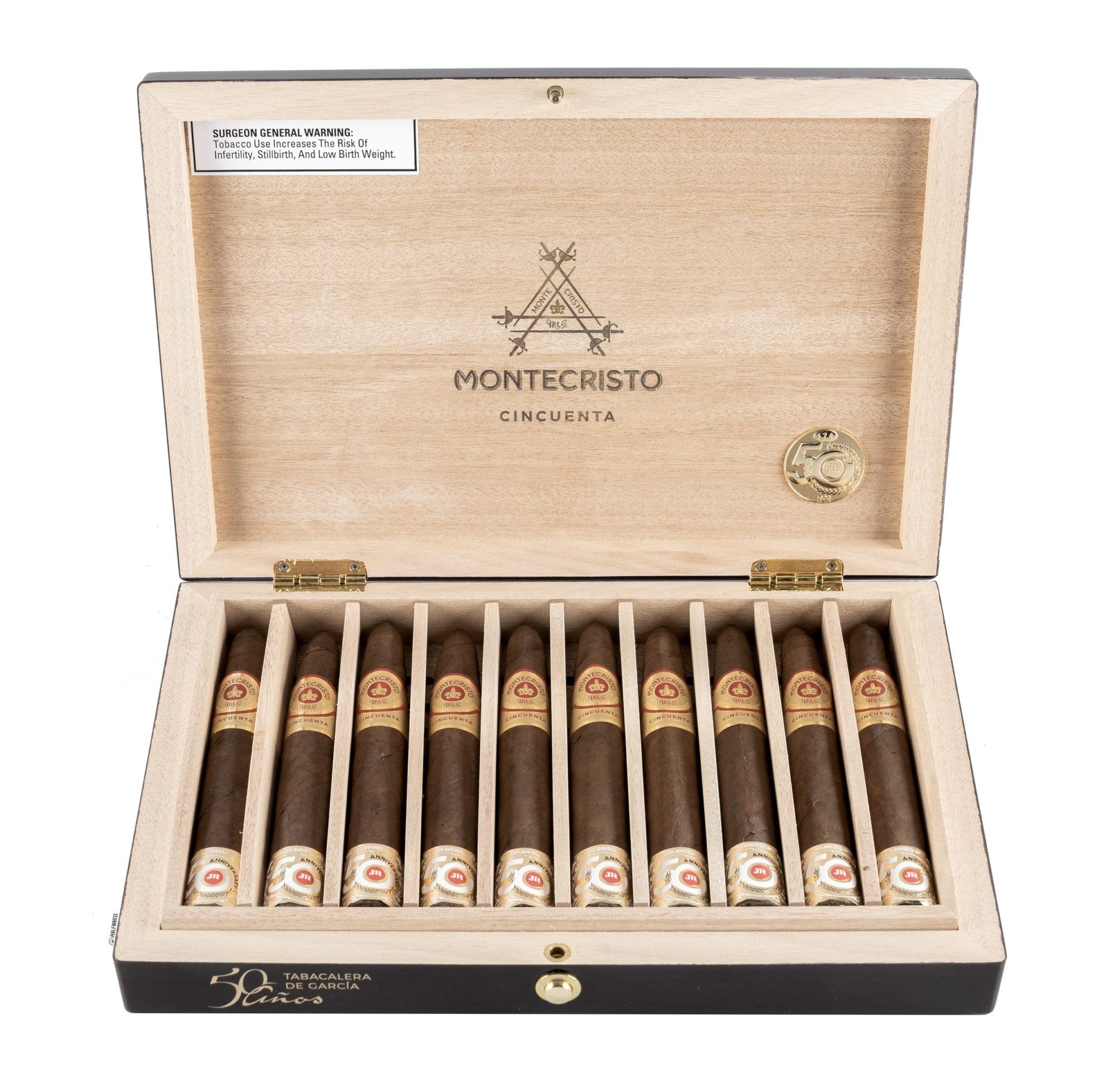
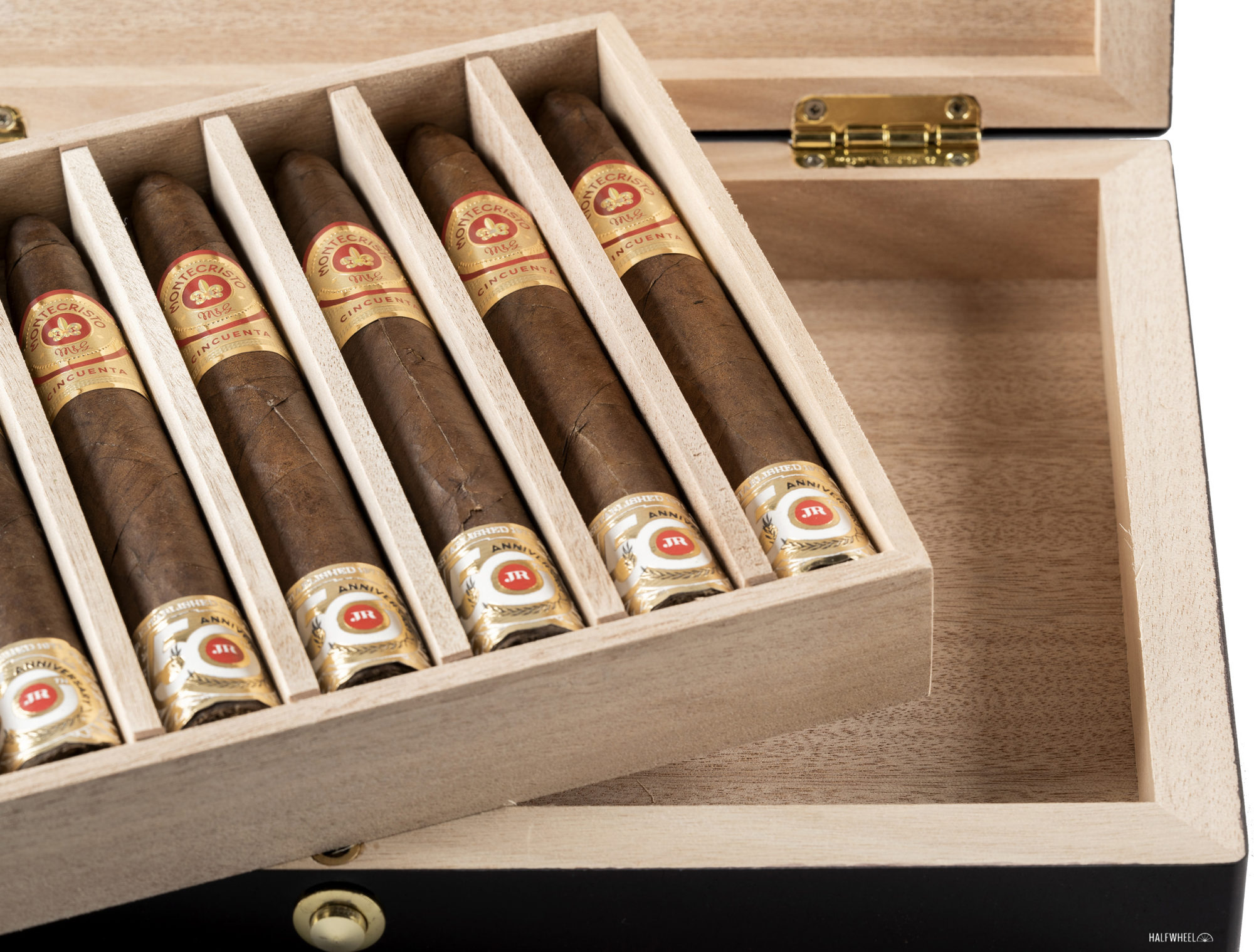

In 2019, Tabacalera de García—the massive factory in the Dominican Republic that produces many cigars for Altadis U.S.A.—celebrated its own 50th anniversary with a cigar called the Montecristo Cincuenta. It was offered in two limited edition sizes, one of which was sold as part of a $10,000 package that came with a special Elie Bleu humidor. The blend uses an Ecuadorian Sumatra wrapper over a Dominican binder and fillers from the Dominican Republic and Nicaragua.
For the JR anniversary, the factory produced a 6 x 50 trompeta. It is limited to 500 boxes of 10 cigars and priced at $35 per cigar.

- Cigar Reviewed: Montecristo Cincuenta JR 50th
- Country of Origin: Dominican Republic
- Factory: Tabacalera de García
- Wrapper: Ecuador (Sumatra)
- Binder: Dominican Republic
- Filler: Dominican Republic
- Length: 6 Inches
- Ring Gauge: 50
- Vitola: Trompeta
- MSRP: $35 (Box of 10, $350)
- Release Date: April 5, 2021
- Number of Cigars Released: 500 Boxes of 10 Cigars (5,000 Total Cigars)
- Number of Cigars Smoked For Review: 3
There’s a lot going on with the Montecristo Cincuenta JR 50th. When the cigar is still in its box there’s a contrast between the incredibly detailed packaging and some really cheap—and reflective—cellophane. Once that cellophane is removed, it’s easier to focus on the dark brown wrappers and the two colorful bands. That being said, this isn’t the nicest-looking wrapper I’ve ever seen as it’s littered with veins. Then, I find myself becoming pretty concerned about construction based on how spongy these cigars feel. Aroma-wise, the wrapper smells like a pile of manure that has been sitting out for a few days, along with some cardboard, the combination around medium-plus. When I smell the foot, the first thing I pick up is a brownie-like sweetness and then beef jerky and woody flavors. That being said, after about the third sniff, I’m no longer able to pick up the sweet chocolate. Once the cigar is clipped, the cold draw shows a complex mixture of brownie-like chocolate, black tea, blueberry, a bit of oregano and some orange bitters. It’s medium-full and a great mixture, a far cry from how the wrapper smells.
Just like you should never judge a cigar based on how dark its wrapper is, I’ve learned not to predict a flavor profile based on the cold draw. That certainly applies here as the Montecristo begins with damp earthiness, mineral flavors, a rubber-like flavor and something that reminds me of freshly rained on mud. Unfortunately, it’s pretty apparent early on that the cigars in the box of Montecristo Cincuenta JR 50ths we purchased are just too moist. The flavor profile is acidic with earthiness, sharpness—at times more metallic—cedar and minerals. It’s a profile that seems more a result of the moisture that is in the cigar rather than the tobacco itself. It finishes with a muted nuttiness and cedar, but there’s just too much of the acidic and metallic sensations. Retrohales are much better thanks to sourdough bread, leather and a sugar sweetness. I’m not sure how much of the metallic sensation actually enters the olfactory, but there’s plenty of it in my mouth which distracts from the positive parts of the retrohale. It finishes with acidic flavors, leather, wheat and minerals. Flavor is full, body is medium-full and strength is medium-plus. The moisture is causing the metallic flavors and it’s also not great for construction. I’m having to smoke a bit quicker than I’d like to keep the cigars lit, with each needing a touch up. While this isn’t something we score, the ash is ugly.
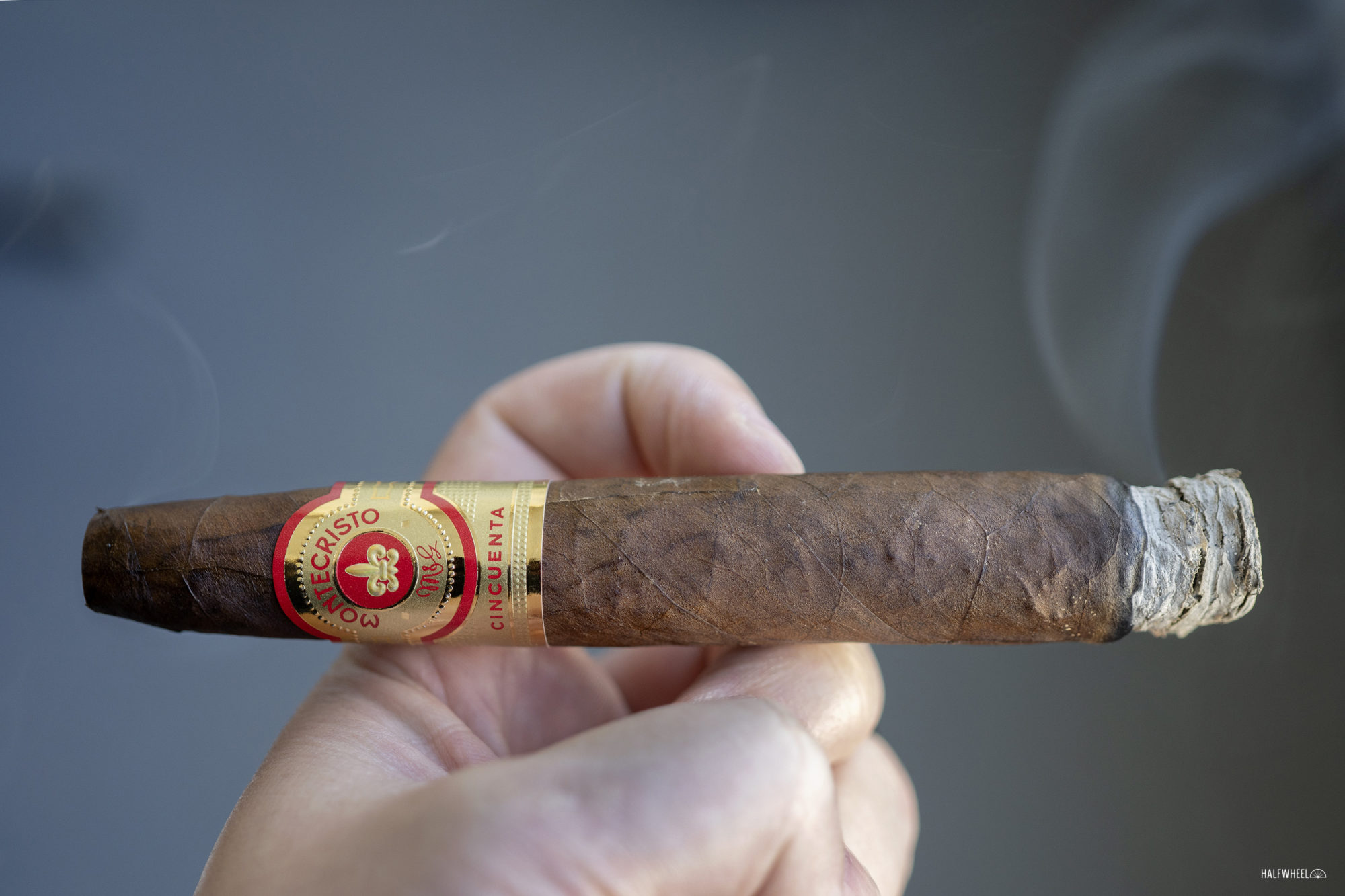
Fortunately, the second third is far less metallic than the first third, though it’s still quite acidic. There’s earthiness, creaminess, cedar and some acidity. My main issue at this point isn’t the acidity, it’s that the flavor profile is super compact, which makes it tough to pick out individual sensations. It finishes with earthiness, leather, wheat, some cloves and a familiar metallic sensation. Retrohales have bread, roasted flavors and saltiness. By this point, it’s clear that there are not any of the metallic flavors during the actual retrohale, or at least no added metallic sensations due to the retrohale. I don’t really understand it as if the smoke tastes metallic in the mouth, shouldn’t it taste metallic in the nose. Retrohales finish with lots of cloves, hay and some of the acidic flavors, though I think that’s more of the residual mouth flavors than the residual retrohale flavors. Flavor is full, while body and strength are medium-plus. Construction remains troubled and I’m forced to make another touch-up or two for each cigar.
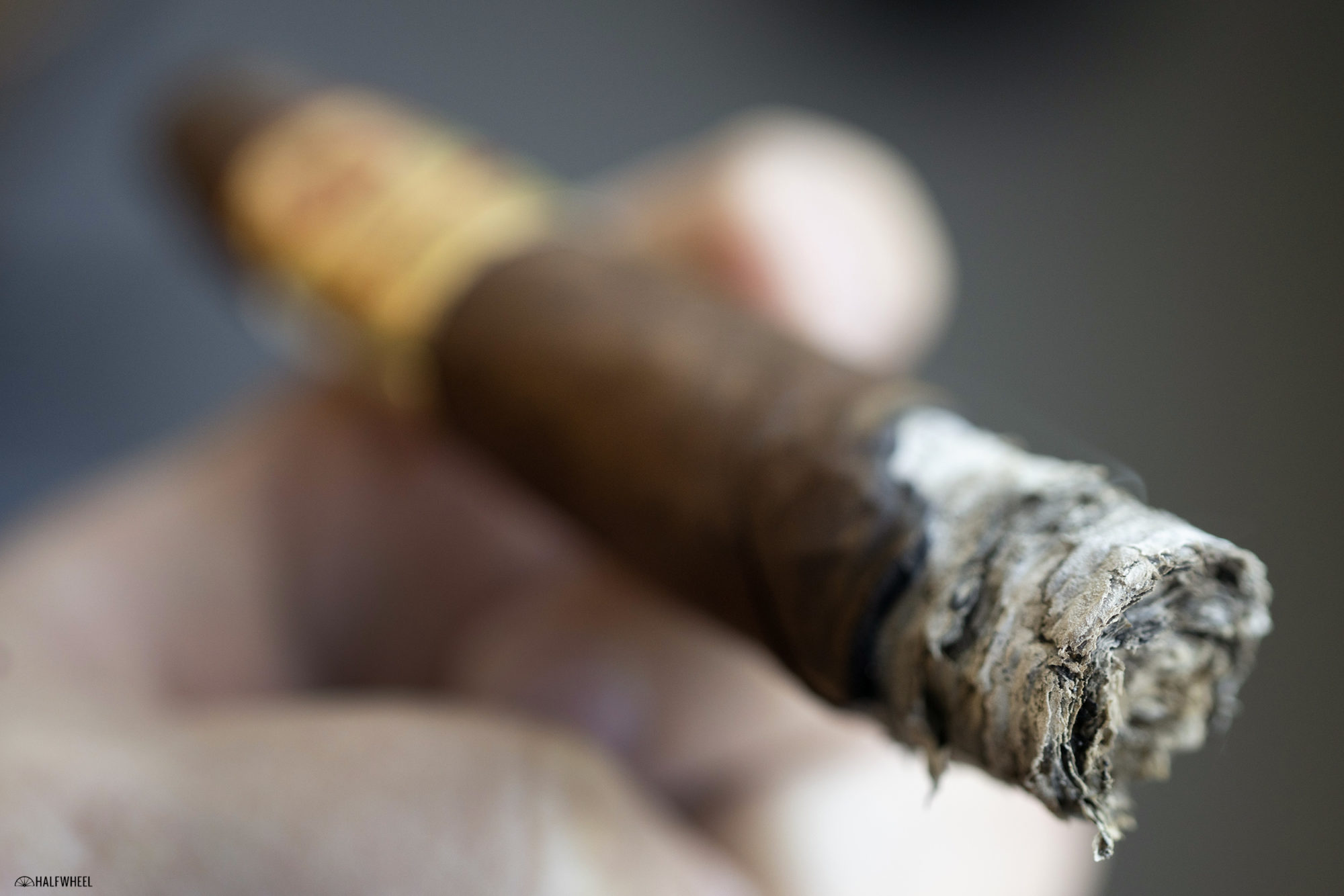
Somewhat out of nowhere, there are some of the deeper terroir flavors Patrick Lagreid regularly mentions during his reviews. It’s a complex mixture of layers of earthy flavors. The Montecristo also has cedar, roasted pecans and, most importantly, the least amount of acidity the cigar has had until this point. It finishes with bread, earthiness, barnyard, minerals and white pepper. Retrohaling the Montecristo Cincuenta JR 50th produces flavors of raspberry, hay and earthiness. The finish of the retrohales has earthiness—though not as detailed as the main flavor—toastiness, hay and leather. Flavor is full, though maybe a bit closer to medium-full than before, while body is back to medium-full, and strength remains medium-plus. Predictably, the need for touch-ups continues.
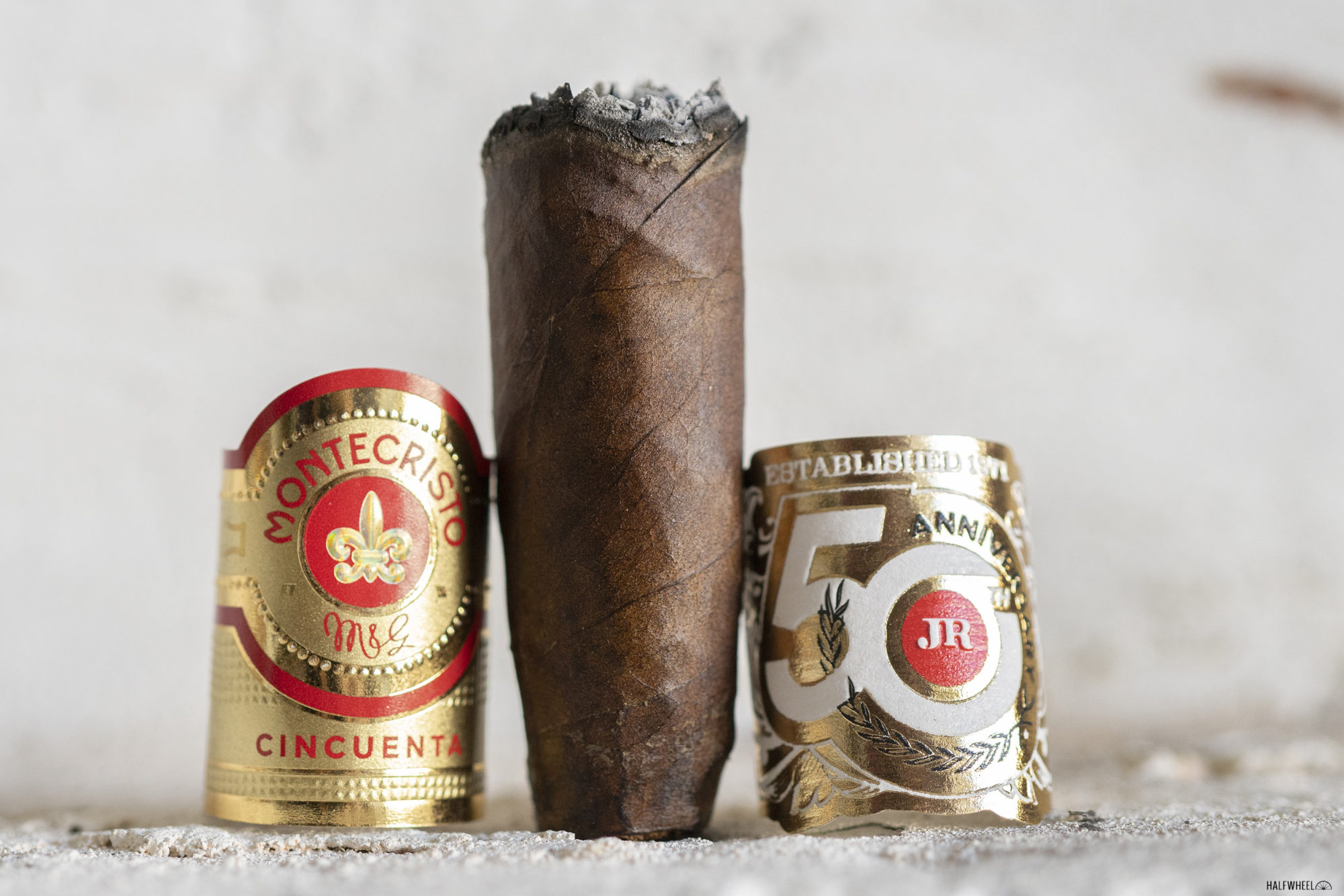
Final Notes
- Note: This review was completed on May 8. I’m not really sure when it will run.
- I am pretty sure that the cigars JR Cigar used for its product photography are actually the size from 2019 that was sold in the Elie Bleu humidor, which was a 6 x 52 torpedo. The cigars in the pictures look distinctly like a standard belicoso and the cigars we got are a trompeta. The difference is the taper for the cap. The cigars we bought more or less taper from the bottom of the cigar to the top, the product photographs from JR Cigar look like a cigar that is a cylinder for most of the way through, with only the top inch or so having an angle.
- On that note, I’d be curious if any of you have purchased these cigars as to what you received.
- The packaging for this release is superb. The boxes themselves are superb and have some great details like the 50th anniversary medallion in the bottom right of the lid, which is an actual piece of metal and not an upgraded sticker.
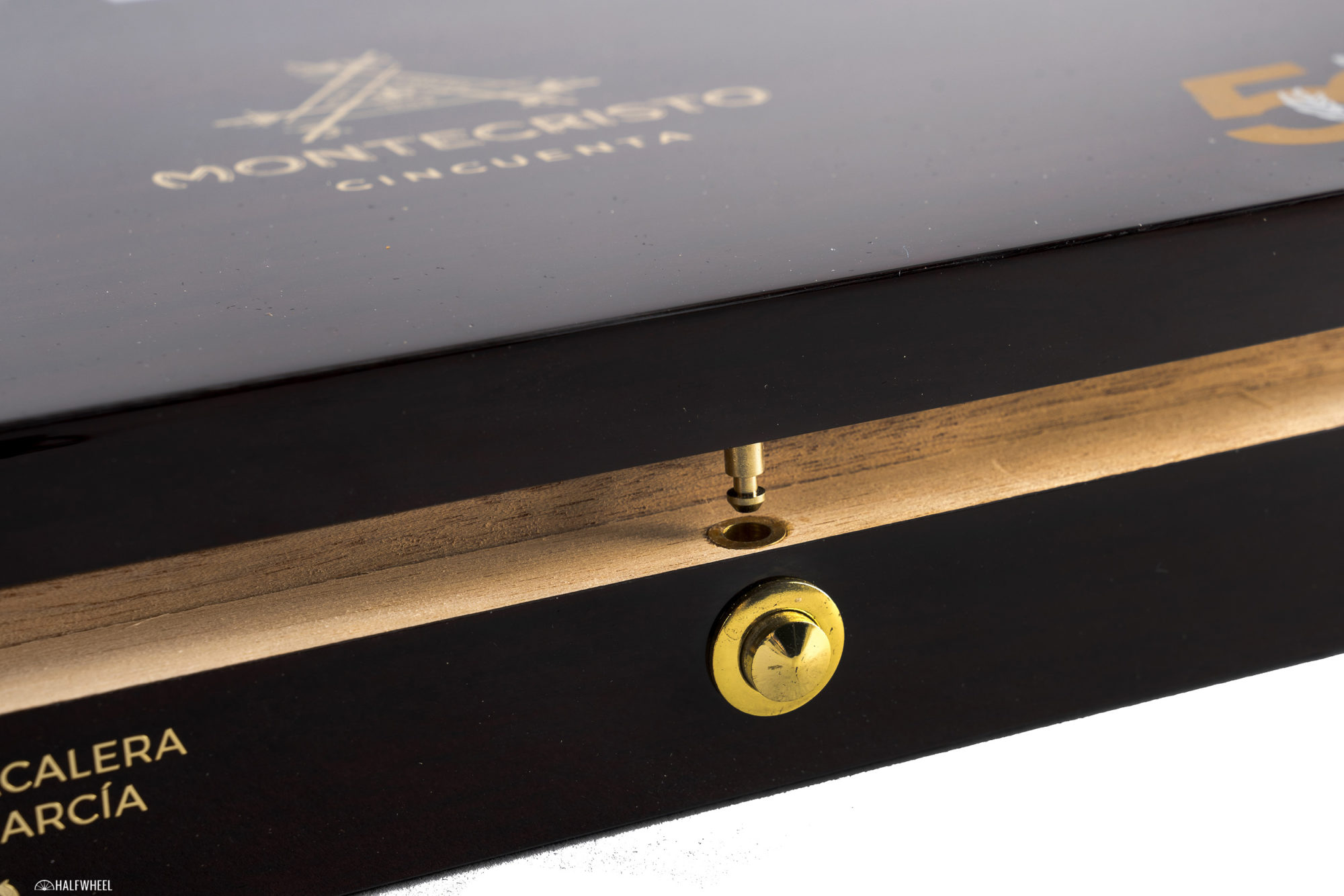
- The closing mechanism is also a push-button system instead of a simple clasp. The boxes are designed in a manner that some would describe as a “humidor box” and include removable dividers and some slots below the cigars that are reminiscent of the floor designs of some humidors.
- I used a HumidiMeter to measure the rest of the cigars in the box, finding they ranged from 70-74 percent. That being said, the bottom of the cigars—where I placed the device—didn’t seem that spongy. The middle parts of the cigar are a very different story, quite spongy, and I got readings as high as 78 percent if I poked the middle parts of the cigar.
- These cigars went into our review humidor on April 6. You can see based on the chart above, this wasn’t an issue of going into a humidor that was too high from a humidity perspective.
- This is some of the cheapest-feeling cellophane I’ve ever felt on a cigar. It’s neither what I would expect from a large company like Altadis U.S.A, nor is it really what I’d expect for a cigar of this price.
- The bottom of one of the cigars was covered in some sort of substance that reminds me of some of the glue issues Arturo Fuente has had. I’m not really sure when Fuente’s glue issues stopped—or were greatly reduced in frequency—but I can’t recall the last time I’ve had a newer Fuente product with glue stains on the wrapper.
- I don’t know what to make of how this cigar should taste given the humidity issues. I’ve smoked the original Montecristo Cincuenta and found it to be a great cigar. My hope is with less humidity, this cigar can be a similar story.
- Altadis U.S.A. and JR Cigar both advertise on halfwheel.
- Cigars for this review were purchased by halfwheel.
- Final smoking time was two hours and 15 minutes to get down to the last inch or so. Because the cigar got better towards the end, I smoked these cigars pretty far down compared to normal.
- Site sponsor JR Cigar carries the Montecristo Cincuenta JR 50th.
At a certain point—and I think it was reached here—it doesn’t matter what the cigar is, if it has too much moisture it’s going to have a pretty standard set of issues: harsh flavors, burn issues, and more importantly, a completely different profile than what the cigar would taste like if it was at a proper moisture level. Midway through the second sample, I went into Basecamp—our project management software—and added a note to redux review the Montecristo Cincuenta JR 50th in six months. For whatever reason, the box we got, or more specifically the cigars inside of that box have way too much humidity. While dry boxing helped a little bit, the cigars were still quite spongy. My plan is to let this box sit out for a week or two to continue the dry boxing and once the moisture levels have been reduced noticeably, I’ll put the box back in a humidor and wait to give the cigar another chance.

